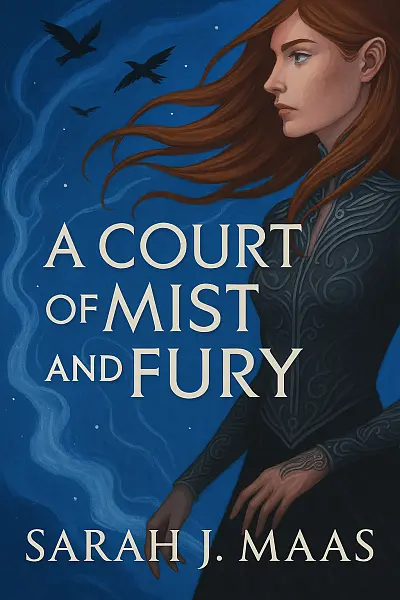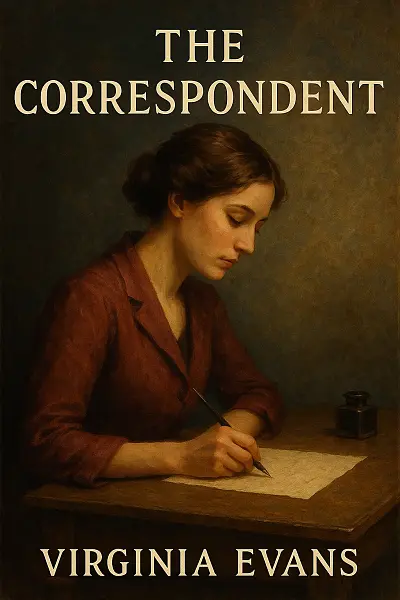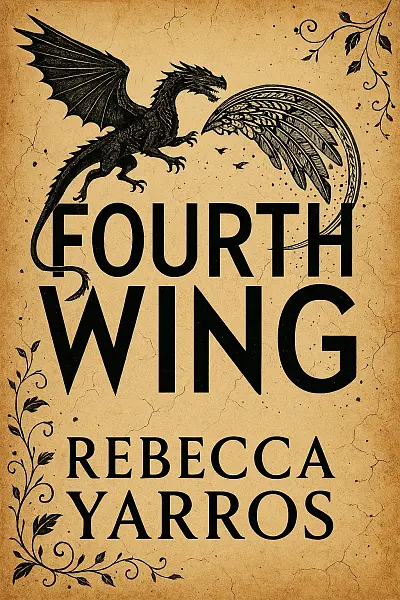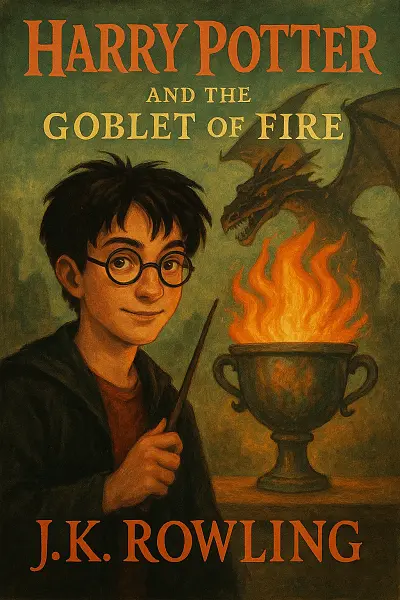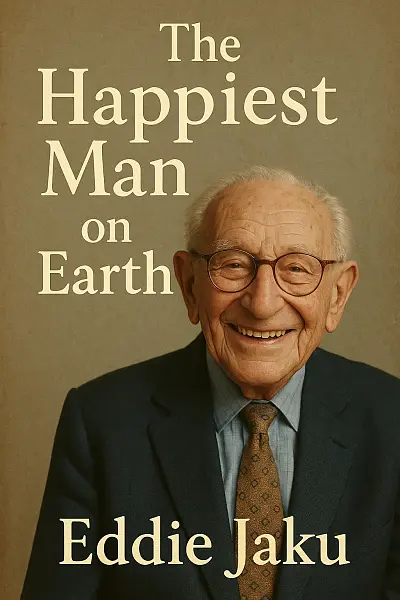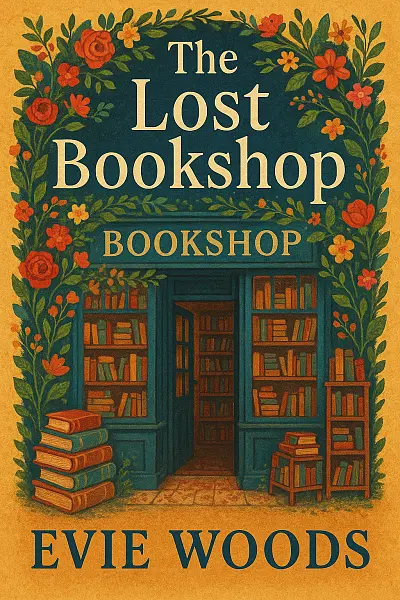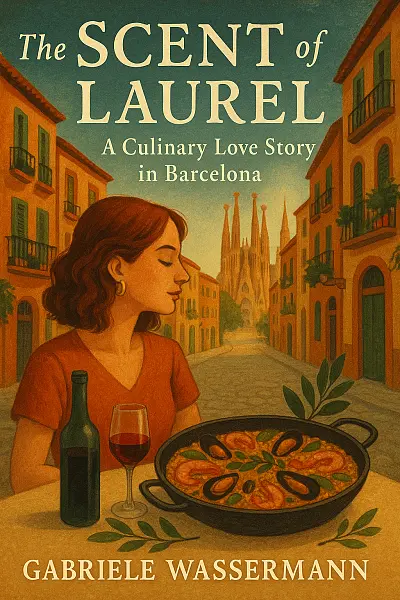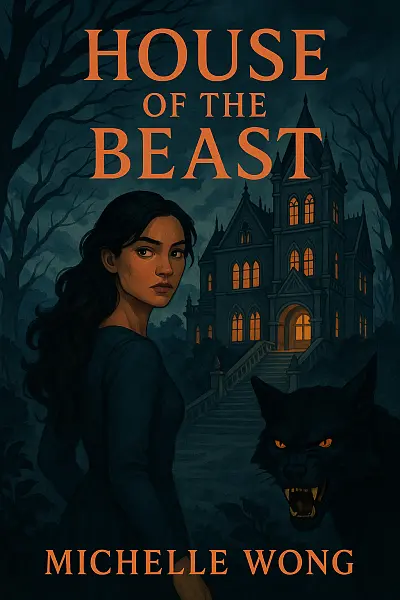
House of the Beast
by: Michelle Wong
Alma grows up an outsider in a cold, aristocratic world, shunned for her birth and finding comfort only with her mother. When illness strikes, Alma sends a desperate plea that uncovers a dark family legacy—she’s the bastard daughter of House Avera, and her father serves the Dread Beast, a terrifying god.
Making a heartbreaking deal, Alma sacrifices part of herself for her mother’s survival, but loss leaves her stranded and aching for vengeance. Bound to a gleaming, monstrous god only she can see, Alma hatches a reckless plan to destroy the house that ruined her—questioning just how far she’ll go for revenge.
With lush illustrations and a gorgeously tense, darkly magical atmosphere, House of the Beast weaves divine rituals, fraught alliances, and twisted romance into every page. Will Alma’s pain fuel her toward justice, or consume her completely?
""Sometimes the deepest courage is not in taming the beast, but in seeing the beauty within its shadow.""
Literary Analysis
Writing Style
Atmosphere
Expect a lush, shadow-draped ambiance that pulses with gothic sensibility and eerie enchantment. Michelle Wong masterfully conjures up a world both intimate and haunting, where every creaking floorboard and flicker of candlelight builds suspense. The mood is persistently tense, tinged with a sense of longing and latent danger that keeps you just a little on edge.
Prose Style
Wong’s prose leans toward the lyrical, with carefully selected details and evocative metaphors that make each scene feel rich and immersive. There’s a poetic touch to her word choices—never overbearing, but promised to delight readers who appreciate subtlety and atmosphere over breakneck dialogue. Sentences often linger in the senses, but she reins in the floridness to keep things accessible.
Pacing
The rhythm starts slow and deliberate, drawing you into the house’s mysteries brick by brick. Wong isn’t in a hurry—expect a story that simmers more than it sprints. That said, momentum builds gradually as the suspense intensifies, rewarding patient readers with bursts of tension and revelations that hit just when you’re fully settled in.
Character Voice
Characters are rendered with a soft intensity; their emotions and secrets are revealed through nuanced interactions and interior monologues. Dialogue is purposeful, often laced with double meanings and tidily woven into the emotional fabric of the plot.
Imagery & Mood
Imagery is lush and sensory-driven—there’s a tactile feel to the environment, from the oppressive velvet darkness of the hallways to the subtle scents that waft through forbidden rooms. The overall mood? Think brooding, seductive, just a hint of fairytale wilderness lurking behind each closed door.
Overall Feel
If you’re in the mood for a slow-burning, beautifully written gothic tale, House of the Beast brings all the atmospheric chills and poetic grace you could want. The writing invites you to savor, not speed, and rewards those who love a story soaked in mystery and melancholy charm.
Key Takeaways
- Shadowy jungle confrontations dripping with claustrophobic tension
- A secretive bestiary, each creature more unsettling than the last
- Aya’s courage tested in a pulse-pounding midnight escape
- Wong’s lyrical prose paints ancient ruins with a fever-dream vividness
- Mysterious letters spark doubt: friend or foe, no one’s intentions are safe
- Unexpected alliance in chapter 14 flips the quest’s moral compass
- Grief and guilt woven into every encounter with the Beast—it’s never just a monster
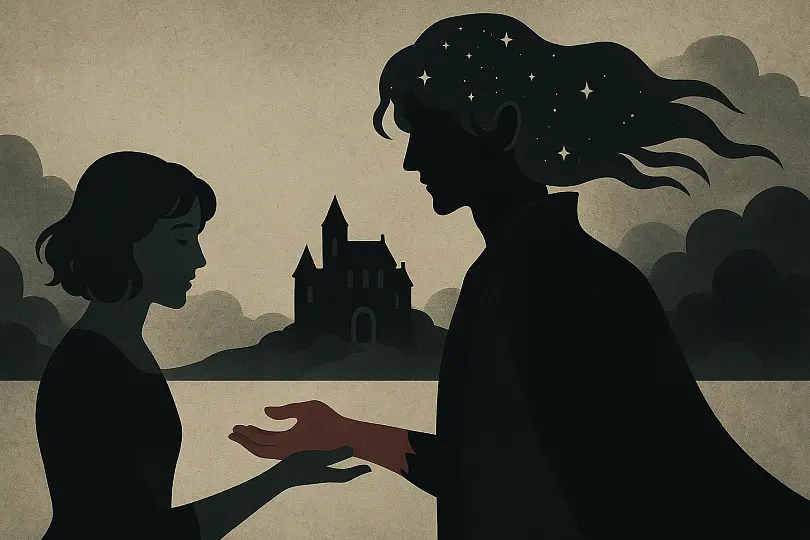
Haunted loyalties unravel in a gothic tale of forbidden desires.
Reader Insights
Who Should Read This
If you're into dark fairy tales, gothic vibes, and atmospheric mysteries, you’re going to want to pick up House of the Beast. This book totally nails the mood—think crumbling estates, tangled secrets, and characters who aren’t always what they seem. If you loved things like The Bear and the Nightingale, Mexican Gothic, or the creepier corners of fantasy, this one has your name all over it.
Perfect for you if:
- You’re obsessed with fairy tale retellings, especially ones that do something a little twisted and unexpected
- You adore slow-burn mysteries that build tension with every page
- You like books where the setting practically becomes a character
- Moody, introspective main characters are your thing
- You don’t mind sinking into a story that’s more about ambience and emotion than nonstop action
But maybe skip this one if:
- You can’t deal with slow pacing or need action right from page one
- Morally grey characters drive you nuts (because nobody here is totally innocent!)
- You’re expecting a happily-ever-after or a traditional, sweet romance—things get complicated and very messy
- Heavy themes and complex emotions feel overwhelming right now
So, if you love getting swept up in lush prose and don’t mind a story that takes its time unspooling its mysteries, you’ll probably get hooked on House of the Beast. But if you’re impatient for quick payoffs or looking for something light and easy, this one might not be your cup of tea.
Story Overview
Ready for a lush, adrenaline-charged adventure?
House of the Beast by Michelle Wong sweeps you into a world where ancient ruins and moonlit forests hide long-buried secrets, and a fiercely loyal heroine stumbles into a dark bargain with a mysterious stranger. As forbidden magic stirs and deadly shadows close in, she’s forced to choose who—and what—she’s willing to risk for survival.
Expect heart-pounding danger, simmering tension, and a wild blend of romance, myth, and razor-sharp suspense in this twisty, atmospheric fantasy that doesn’t let go.
Main Characters
-
Lina Cai: Reluctant heroine thrown into a dangerous magical world. Her growth from fear to fierce determination is the heart of the story.
-
Prince Amir: Enigmatic ruler cursed to live as a beast. His struggle between humanity and monstrosity is both tragic and captivating.
-
Soraya: Lina’s loyal childhood friend who provides comic relief and emotional grounding, reminding Lina of what’s at stake back home.
-
Koh: Mysterious advisor whose shifting allegiances keep readers guessing. He embodies the story’s themes of trust and betrayal.
-
Lady Jia: Ambitious court rival, constantly scheming for power. She drives much of the courtly tension and tests Lina’s resolve.
If You Loved This Book
If House of the Beast swept you away with its lush world-building and fearless protagonist, you’ll feel right at home if The Bear and the Nightingale by Katherine Arden is already a favorite on your shelf—both immerse readers in a tapestry of mythic atmosphere and powerful feminine agency, pulling you into folklore-steeped landscapes that feel both ancient and vividly alive. At the same time, Michelle Wong’s intricate approach to magic and secretive societies quietly echoes some of the captivating secrecy that makes The Gilded Wolves by Roshani Chokshi sparkle, blending mystique, puzzles, and the emotional heft of found family dynamics.
For fans whose screens are their gateway to adventure, the show Shadow and Bone comes to mind—in particular, the way it melds sweeping fantasy and shadowy intrigue with high emotional stakes. The tension between destiny and free will in House of the Beast calls to mind the complex choices and epic dangers viewers navigate in Ravka, making Wong’s novel an irresistible pick for anyone who grew obsessed with that kind of dark fairy tale energy. Every comparison draws out the sense of enchantment, treachery, and heart that sets House of the Beast apart while placing it alongside some of the most beloved adventures told in recent years.
Expert Review
What do we really owe to the families that failed us, and what do we become when darkness offers us a way out? Michelle Wong’s House of the Beast flings readers headlong into these urgent questions, mixing revenge, agency, and monstrous desire in a twisting dark fantasy. Through surreal imagery, chilling rituals, and fragile love, Wong investigates how violence shapes identity and how those on the edge might grasp for power—or grace—even in the shadow of gods.
Wong’s writing style is lean but evocative, blending quick, visceral descriptions with moments of unsettling lyricism. Her illustrator’s eye shines: the prose is animated by sharply drawn details—flickers of starlit hair, the oppressive beauty of the Avera estate, the sickly iridescence of divine presences—that create a constant tension between the mythic and the intimate. Dialogue snaps with bitter wit and raw hurt, especially in Alma’s interactions with the Beast, infusing each exchange with both menace and yearning. Narrative pacing is relentless without being breathless; Wong balances frenetic action sequences and ceremonial atmospheres with quieter, introspective passages. The illustrations, woven through the text, act as primal, emotional amplifiers rather than mere adornments, grounding the reader—in moments of violence, tenderness, and surreal horror—within this fractured world. However, the secondary characters can sometimes feel sketched rather than fully realized, their motivations compelling but sometimes obscured by the novel’s intense focus on Alma’s point of view.
At its core, House of the Beast explores outsider rage, the price of inheritance, and the dangerous allure of power. Wong deftly interrogates what it means to be chosen—and how consent becomes dangerously blurred once divine and family obligations collide. Alma’s journey threads questions about bodily autonomy, grief, and class—the cold machinery of aristocracy rendered in all its callous beauty and decay. The narrative’s engagement with vengeance is particularly nuanced: Wong refuses the comforts of simplistic justice, instead charting the corrosive, isolating effects of hatred, and mapping how love or monstrous intimacy might smuggle hope—or further ruin—into even the bleakest hearts. Culturally, the story resonates with our own era’s reckoning with structures of privilege, belonging, and intergenerational trauma. The Beast himself, both a manifestation of death and impossible romance, is a rich symbol: Is he a liberator or just another jailor in seductive disguise?
Within dark fantasy, Wong’s debut stands out for its potent blend of perilous intimacy and divine horror. It echoes the intensely personal mythologies of Naomi Novik or Alix E. Harrow, while refusing the redemptive sentimentality of many modern fairy tale retellings. The illustrated format heightens the literary energy, recalling the mythic hybridity of Monstress or The Bear and the Nightingale’s folkloric atmospheres.
If the novel falters, it is in the uneven depth of its supporting cast and occasional overwrought metaphors, but the ferocity and originality of Wong’s vision are undeniable. House of the Beast matters now because it dares to make the monstrous—and the wounded—beautiful, messy, and undeniably human. For dark fantasy fans hungry for both brutality and tenderness, it’s a captivating, haunting triumph.
Community Reviews
I STILL CAN'T SHAKE OFF THE WAY Helena stood in that rain, eyes wild, daring the shadows to move. THAT SCENE. It creeped into my dreams and stayed, haunting and beautiful all at once.
honestly, that one scene with Mira in the mirror? CHILLS. I kept replaying it in my head at 2am, wrecked my whole night. Wong knows how to craft hauntings that linger.
Okay, so House of the Beast made me re-read that scene under the staircase three times because WHAT EVEN WAS THAT. My brain is still spinning and I have zero chill left after meeting Lucien. Am I haunted? Yes. Am I sleeping? No.
stayed up way too late because that one scene where the shadows moved and the beast whispered just would not leave my head. michelle wong, you owe me sleep and maybe a nightlight. haunting in the best way!
so I picked up House of the Beast thinking I'd skim a chapter before bed, but then THAT TWIST with Eloise in the red room happened and suddenly it was 3 am. Michelle Wong, you owe me sleep.
Cultural Context & Discussion
Local Perspective
If you read House of the Beast by Michelle Wong in the context of Malaysia, the book honestly feels like it hits home in the most unexpected ways.
- The themes of identity and resistance mirror Malaysia’s postcolonial history and our own struggles for cultural preservation and autonomy. When characters clash with oppressive forces, locals might be reminded of Malayan independence or reformasi-era activism.
- Family loyalty and community—central to the novel—align so closely with our collectivist values. Malaysians get why the heroine would sacrifice for family; it’s practically woven into our fabric.
- However, the book’s more individualistic undertones sometimes clash with our expectation for social harmony, sparking great debate over whether personal freedom should come before group consensus.
- Stylistically, Michelle Wong plays with folklore much like classic Malaysian storytellers, but gives it this gritty, modern twist—totally echoing local literary moves seen in authors like Zen Cho or Hanna Alkaf.
All in all, House of the Beast doesn’t just tell a story—it reflects and even challenges the deep-seated currents that run through Malaysian hearts and history.
Points of Discussion
Notable Achievement:
House of the Beast by Michelle Wong quickly became a fan-favorite in the YA fantasy community, earning a spot on several "Best Debut" lists and sparking a vibrant online fandom thanks to its fresh take on myth-inspired world-building and dynamic, morally complex characters.
This book's influence is still being felt—it's credited with revitalizing interest in Southeast Asian folklore in mainstream fantasy circles and has attracted attention from major streaming platforms for a potential adaptation.
